本文由 Department of ARCHITECTURE Co., Ltd. 授权mooool发表,欢迎转发,禁止以mooool编辑版本转载。
Thanks Department of ARCHITECTURE Co., Ltd. for authorizing the publication of the project on mooool, Text description provided by Department of ARCHITECTURE Co., Ltd.
Department of ARCHITECTURE Co., Ltd.:The MIST温泉酒店位于中国河南省省会郑州许昌县,距市区100公里。自唐朝以来,中国的这一地区一千多年来一直被认为是中国最著名的温泉胜地。在冬季的四个月时间里,来自中国各地的人们都会参观当地富有盛名的温泉。The MIST的目标是成为河南的新地标,全年都吸引国内外游客来游玩。
Department of ARCHITECTURE Co., Ltd.: The MIST Hot Spring Resort is located in Xuchang prefecture, 100 km. from Zhengzhou, a capital of China’s Henan province. This region of China has been considered the nation’s most famous hot spring destination for over a thousand year since the Tang Dynasty era. During the four months of winter, people from all over China visit its abundant hot springs. The MIST aims to be a new landmark of Henan that will attract both domestic and international travelers to the province all year round.

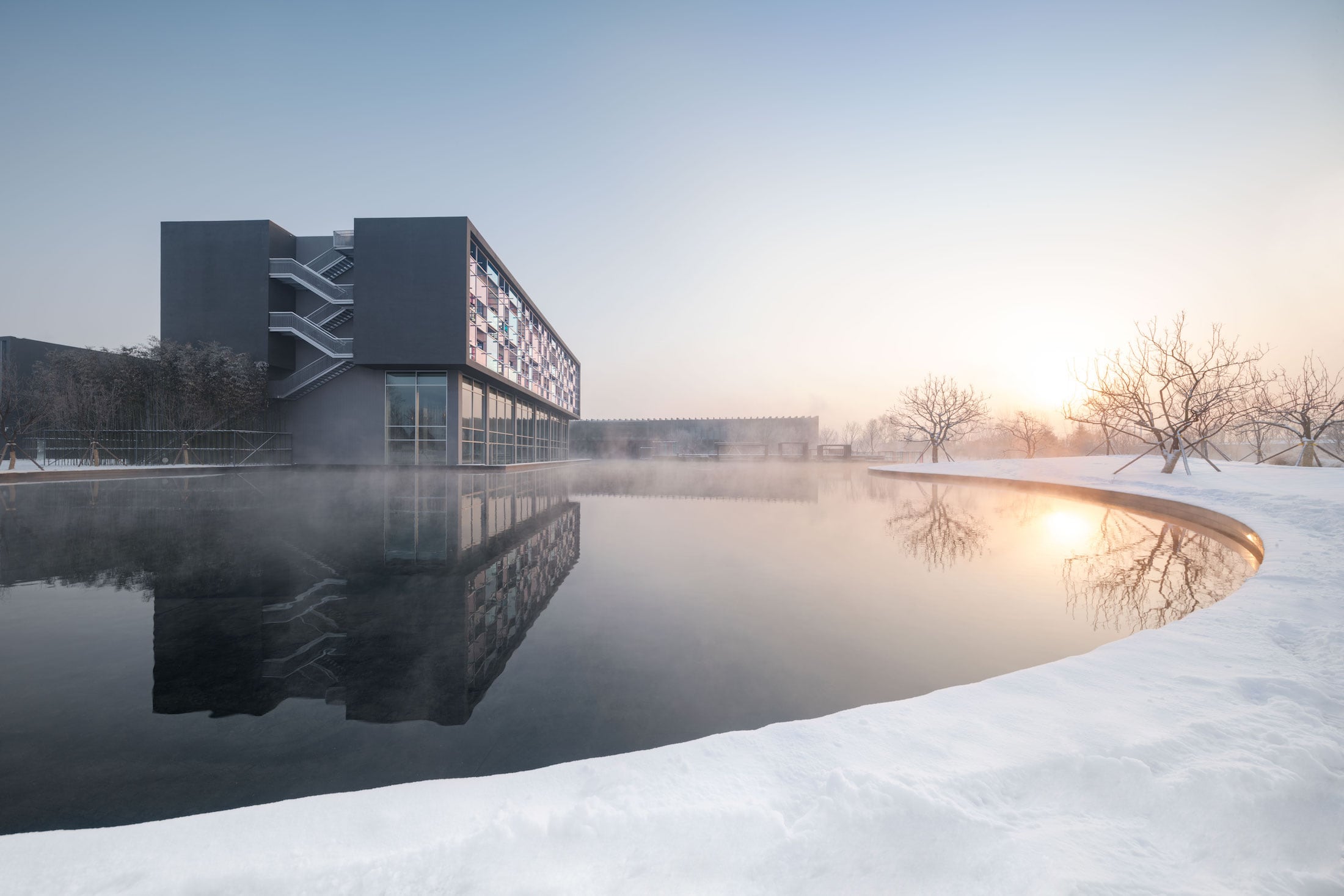
这里最好的自然属性隐藏在地下——它是中国最好的地热地下水。加热后的水升起来,在水面上慢慢地飘浮着薄雾。该项目试图通过主布局设计来提高这种模糊景观神秘品质的体验。建筑整体、通道、水景,都与温泉池的天然蒸汽和一些将环绕整个大气和体验的额外的机械化产生的雾相结合。漂浮在水面上的薄雾,不仅营造了梦幻般的氛围,也为客人提供了一定程度的隐私,让客人在私人温泉池中从其他客人的视野中放松。
The best natural attribute of the site is hidden down below – it is China’s finest geothermal underground water. As the heated water is brought up, it gives off gently lingering mist floating above the water surface. The project attempts to heighten the experience of this mystic quality of blurring landscape through master layout design. The building masses, the passageways, the waterscape, are strategically integrated with natural steam from hot-spring pools and some additional mechanized fog that would surround the overall atmosphere and experience. White mist floating just above water surface not only creates dreamy ambience but also provides certain level of privacy for guests relaxing in private hot spring pools from other guests’ view.
▼自然雾气加上湖中的机械喷嘴喷出的雾气营造出神秘的氛围 Natural hot steam from the hot spring pools, together with mist from mechanized nozzles in the lake, creates mystic ambience around the hot spring island.
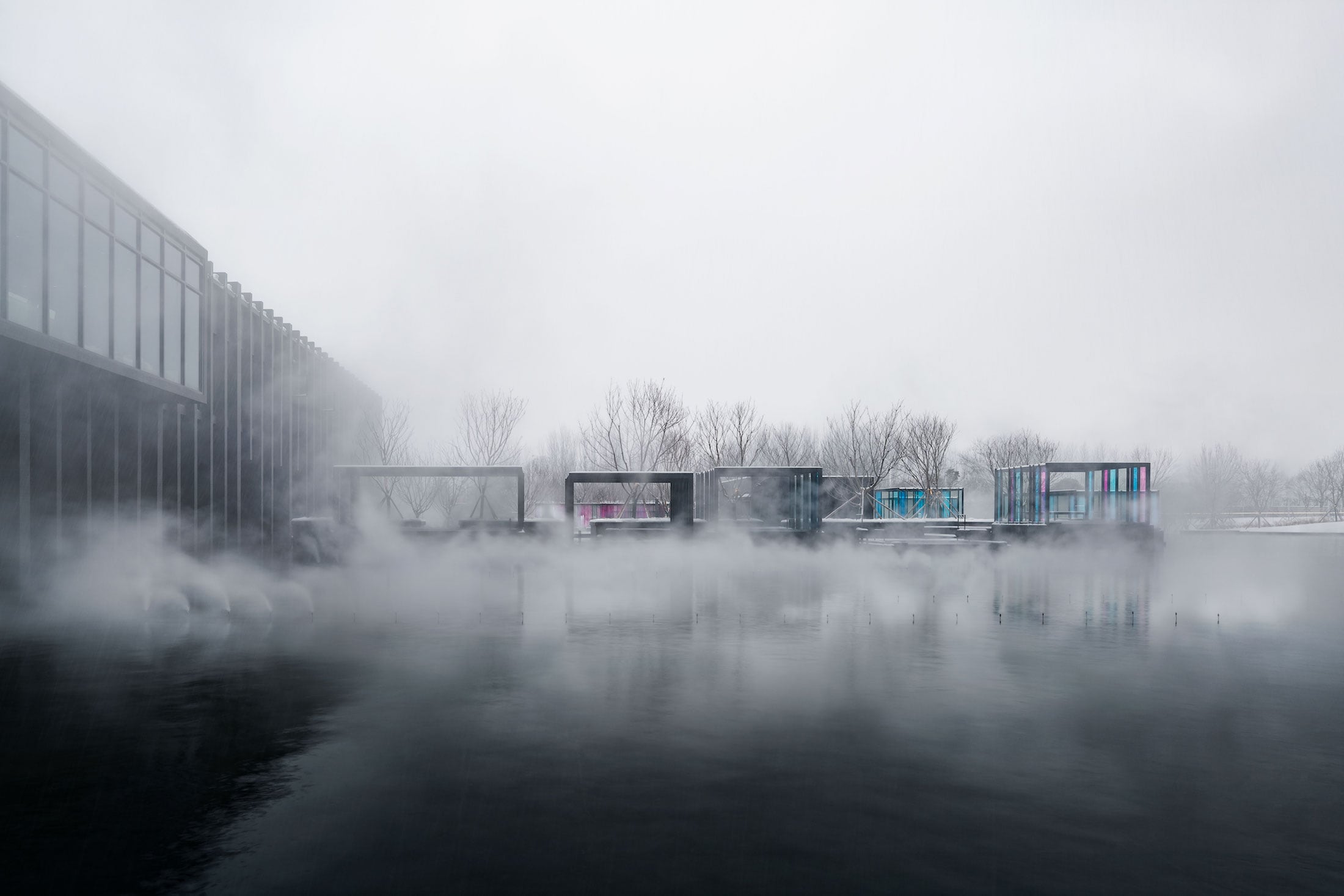



在中国中部,白雪、阴沉的天空和光秃秃的树木交织在一起,形成了一幅单色画,在冬天的大部分时间里给人一种相当阴郁的印象。该项目是我们试图创造一个独特的方式来“着色”我们的客人的经验。灵感来自于20世纪初彩色的黑白电影,当时艺术家们在黑白电影上逐帧手绘透明的颜色层。结果是出奇的丰富多彩,因为颜色不是在物体上,而是漂浮在空中。建筑语言采用了将彩色的光染在单调的表面上的想法。建筑的外立面采用了双重的三维网格结构,灵感来自中国的竹子脚手架,充满了蓝色和紫红色的玻璃色调。该系统赋予立面深度和颜色的复杂性,并将阳台组合成一个单一的建筑元素。建筑和室内表面保持单色,以接收和提高彩光通过彩色玻璃涂在自身上的效果。阳光透过立面照射进来,同时也为空间注入了丰富多彩的光线;彩色玻璃从里面往外看,照亮了阴沉的天空。
In central China, a combination of white snow, somber sky, and leafless trees results in a monochromatic picture with a rather gloomy impression for the most part of winter. The project is our attempt to create a unique way to “colorize” our guests’ experience. The inspiration came from the colorized black and white films in the early 1900’s when the artists hand-painted transparent layers of colors onto black and white films, frame by frame. The result was surreally colorful since the colors were not at the objects, but seemed afloat in the air. The idea of dyeing the space with colorized light onto monotone surface was adopted into architectural language. The facade of the building is doubled with three dimensional lattice structure inspired by Chinese bamboo scaffolding, filled with shades of blue and magenta glazing. This system gives depth and color complexity to the façade, and combines balconies into a single architectural element. The architectural and interior surfaces are kept monochrome to receive and heighten the effect of the colored light painted upon itself through the colored glass. As sunlight shines through the facade, it floods the space with colorful light while at the same time; the colored glass brightens up the gloomy sky while looking out from the inside.
▼立面系统为室内空间注入了丰富多彩的光线 The façade system floods interior space with colorful light
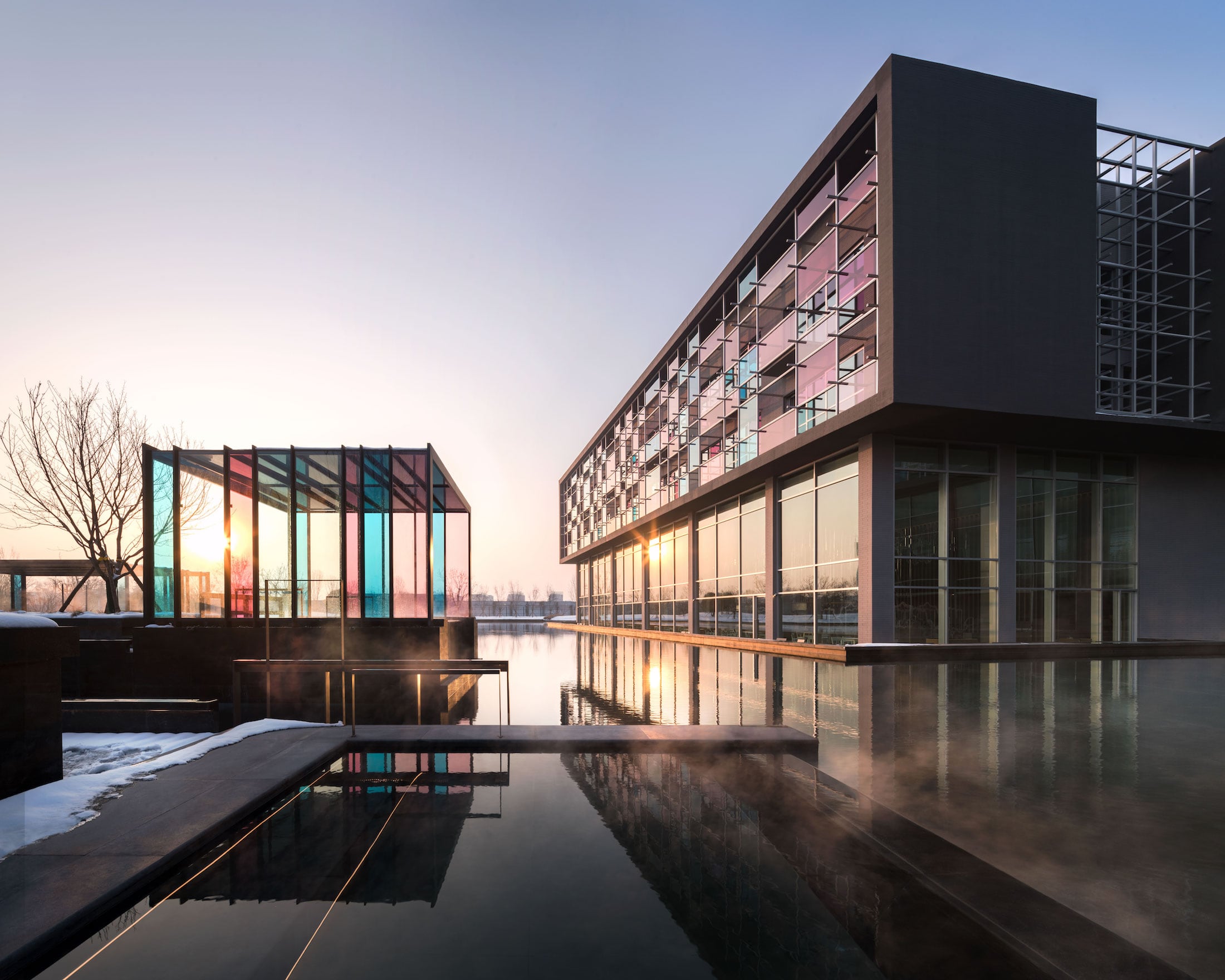

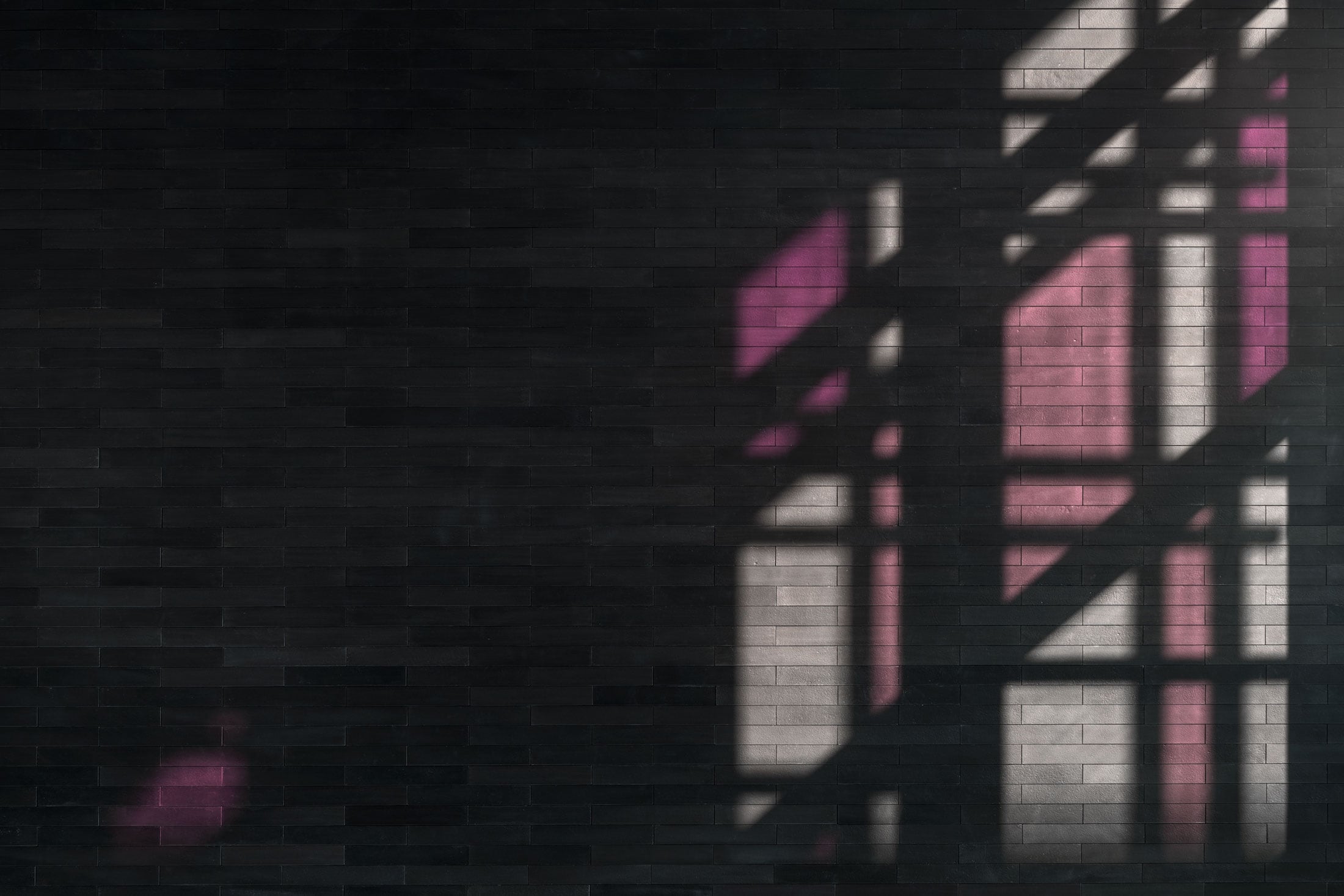
▼室内公共温泉池被蓝色LED灯染成蓝色 The Indoor public hot spring pool was dyed with blue LED light

立面采光有效地体现了建筑设计的复杂性和微妙性。每个彩色玻璃面板从底部被强烈地照亮,而后面的实心墙被柔和地照亮作为背景。这些照明方法的结合创造了多层次的视觉感受,在晚上模糊了外立面。从远处看,建筑物就像一个漂浮在湖面上的建筑灯笼。
The facade lighting effectively shows complexity and subtlety of the architectural design. Each colored glass panel gets illuminated sharply from the bottom whereas the solid wall behind is softly lit up as a background. The combination of these lighting approaches creates layers of visual interest and blurs the facade at night. The building becomes an architectural lantern floating above the lake, seen from afar.
▼建筑立面映射在湖面上 The image of lit-up building façade perfectly mirrors onto the lake surface

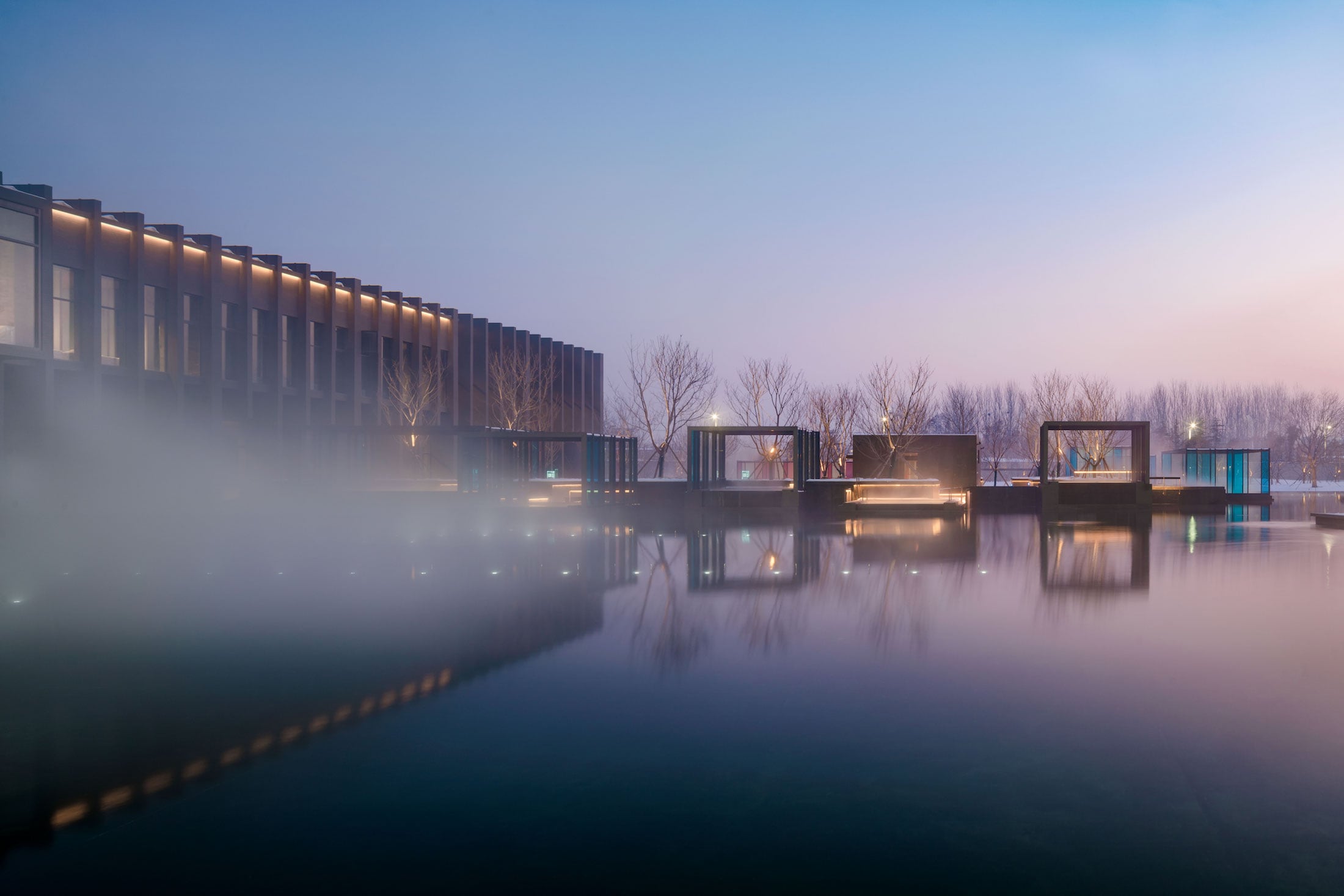

在这里,色彩作为一个三维的建筑元素,而不是作为装饰材料,不仅创造独特的视觉,也创造空间。
Here, color is used as a three-dimensional architectural element, not as finishing material, to create not only unique visual but also space.
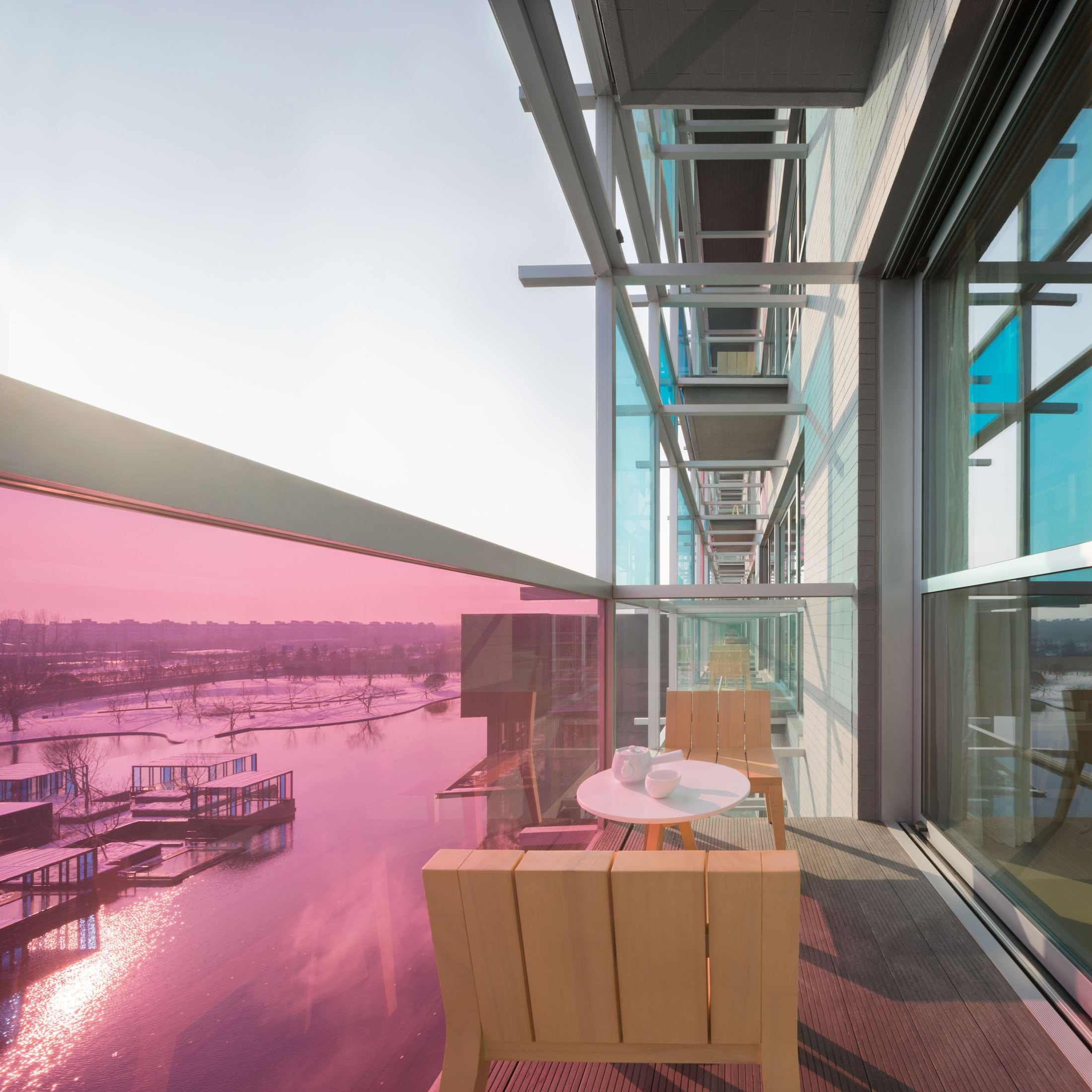
我们室内设计的灵感也来自温泉蒸汽本身的美。在酒店的各个角落都设计并安装了一些特定于特定地点的设施,探索与雾和水有关的自然现象,作为将整个体验联系在一起的主要元素。视觉上有冲击力的装置不是作为装饰品添加的,而是不可分割地融入建筑和室内空间。对于大堂和酒吧,一个由数百层透明水晶和彩色水晶组成的装置的灵感来自穿过热蒸汽的光谱,根据观众从侧面、从末端或从装置本身的半透明体块内部的位置,可以看到不同的视角。远处的湖泊景观,透过透明的装置,引人入胜。室内空间保持单色,以水晶和地板照明雕塑为主,强化空间色彩化的理念。
Our inspiration for interior design also came from the beauty of the hot spring steam itself. Architecturally-scaled site-specific installations exploring natural phenomenon relating to mist and water are designed and installed throughout the hotel as the main elements that tie the entire experience together. These visually impactful installations are not added as decorations, but inseparably integrated into architecture and interior space. For the lobby and bar, an installation made of hundreds layers of clear and color crystals is inspired by a spectrum of light passing through hot steam which can be viewed differently depending on position of the viewers from the side, from the end ,or from inside the translucent volume of the installation itself. The lake landscape beyond is enchantingly seen through the sheer installation. Its interior space is kept monochrome with color accents in crystals and floor lighting sculptures, to strengthen the idea of dyeing the space with colorized light.
▼大堂透明水晶 The clear crystal installation in lobby
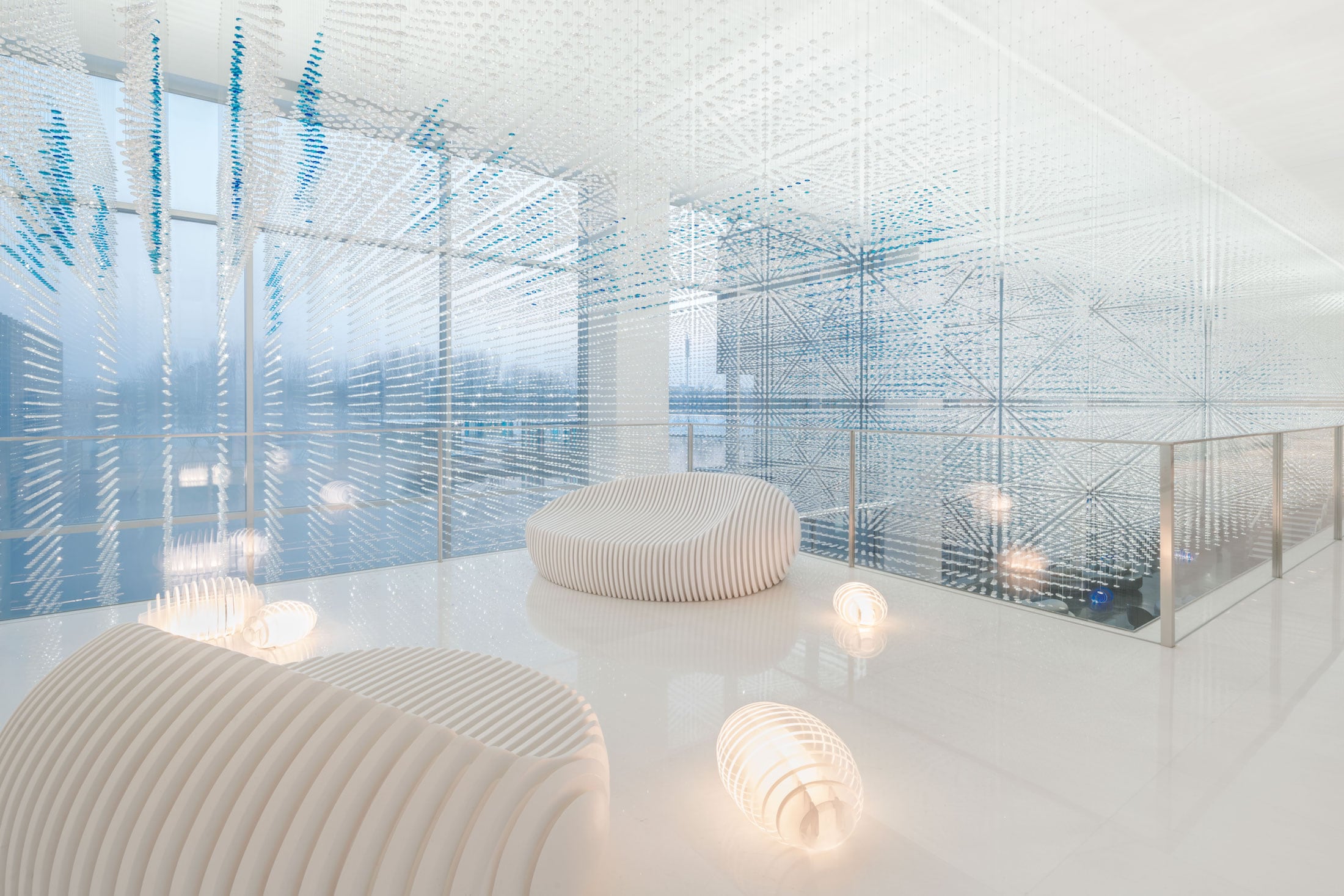

▼酒吧彩色水晶 The color crystal installation in bar
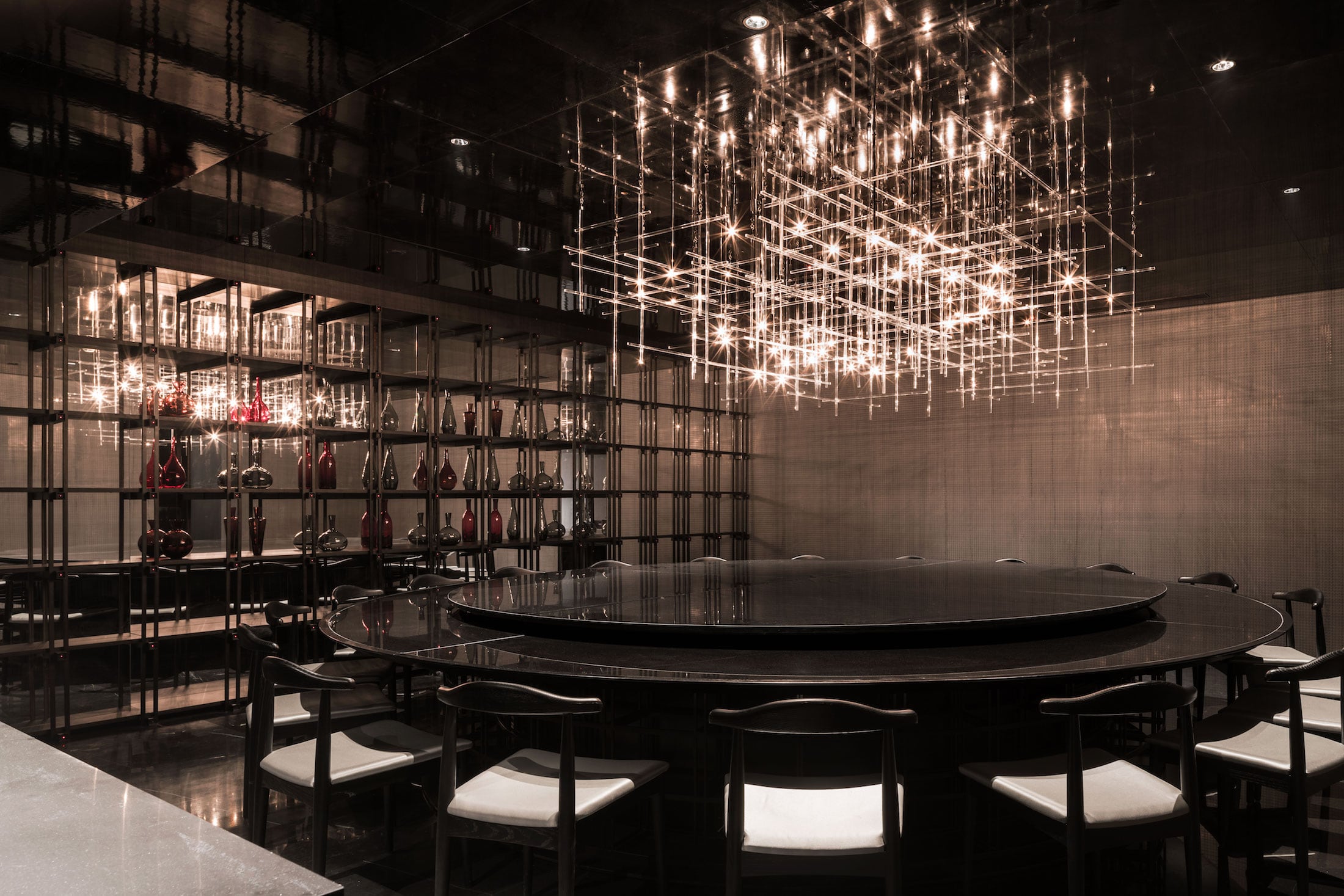
餐厅的设计灵感来自于蒸汽的银色线条,它决定了餐厅的座位和厨房区域。在一天中不同的时间里,丙烯酸平面边缘的光的变化会带来不同的情绪。
In the restaurant, an installation inspired by silver-lining silhouette of steam defines seating and kitchen zones. Color-changing light at the edge of the acrylic planes gives different moods through different time of the day.
▼银色线条装置决定餐厅的不同功能区域 The Silver lining installation defines different dining zones
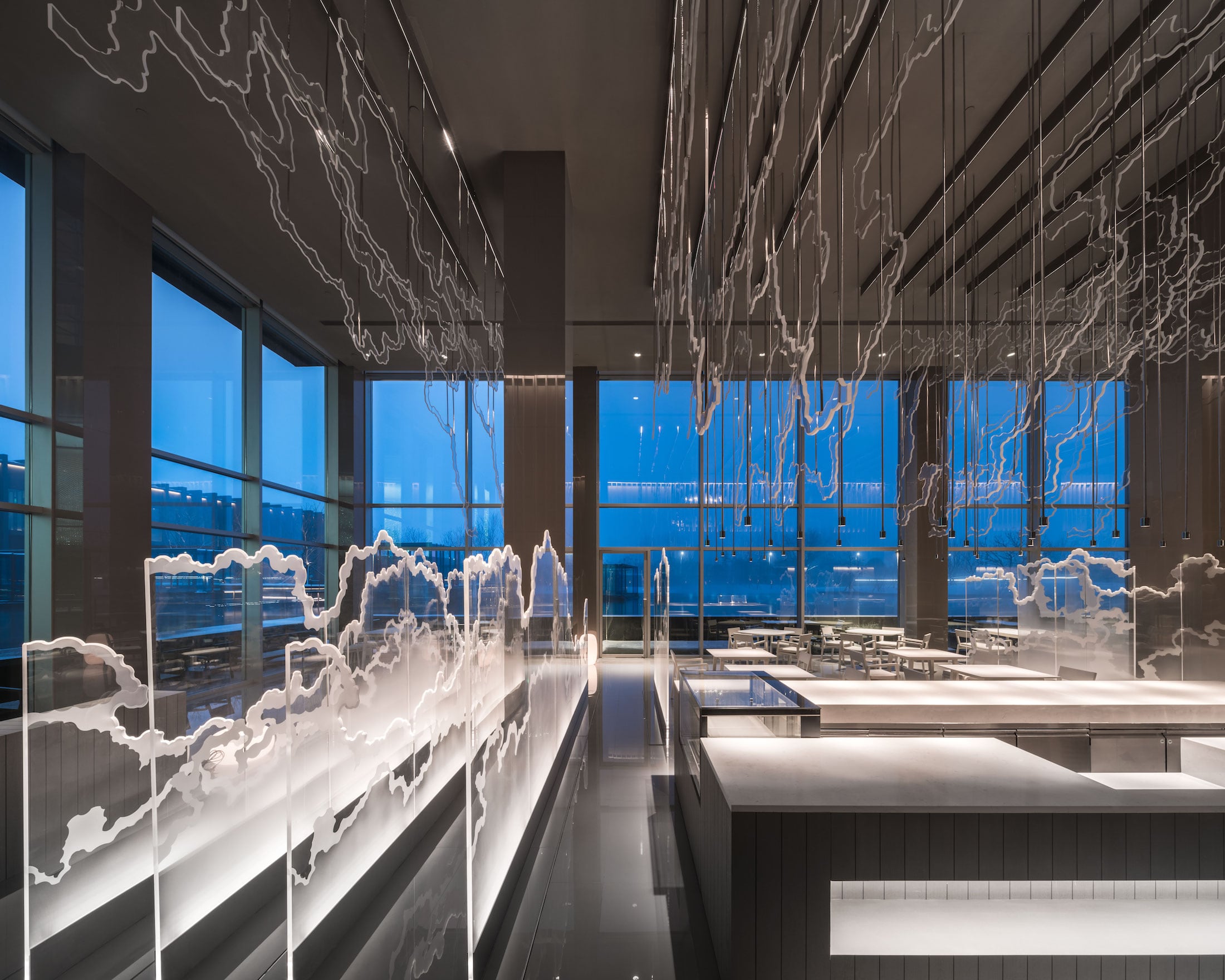

▼装置细节 Detail of the Silver lining installation
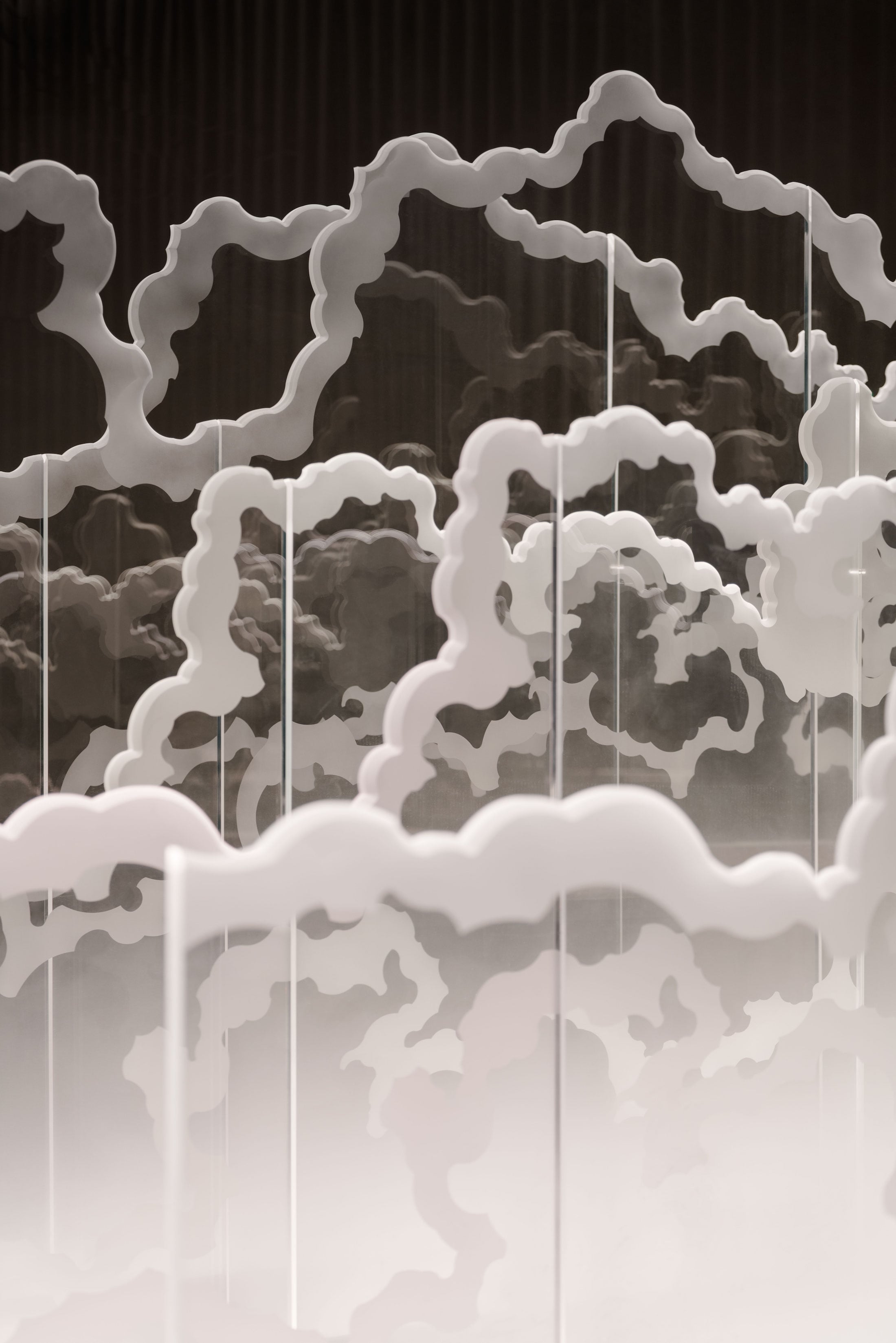
在宴会厅里,一个精致的丙烯酸环矩阵形成了一个半透明、不规则的云状。这个天花板装置,加上地板地毯上的云图案,给空间带来了一种不同寻常的轻盈感。色彩变化的灯光环分散在云装置的中间,创造出不同的氛围,适合宴会厅举办不同性质的宴会。
In the ballroom, a matrix of delicate acrylic rings forms a semi-transparent, irregular cloud-like shape. This ceiling installation, together with the cloud pattern on the floor carpet, gives an unusual feel of lightness to the space. Color-changing lighting rings scattered in the midst of the cloud installation creates different moods suitable to different functions held in the ballroom.
▼宴会厅天花板装置 The ceiling installation in the ballroom
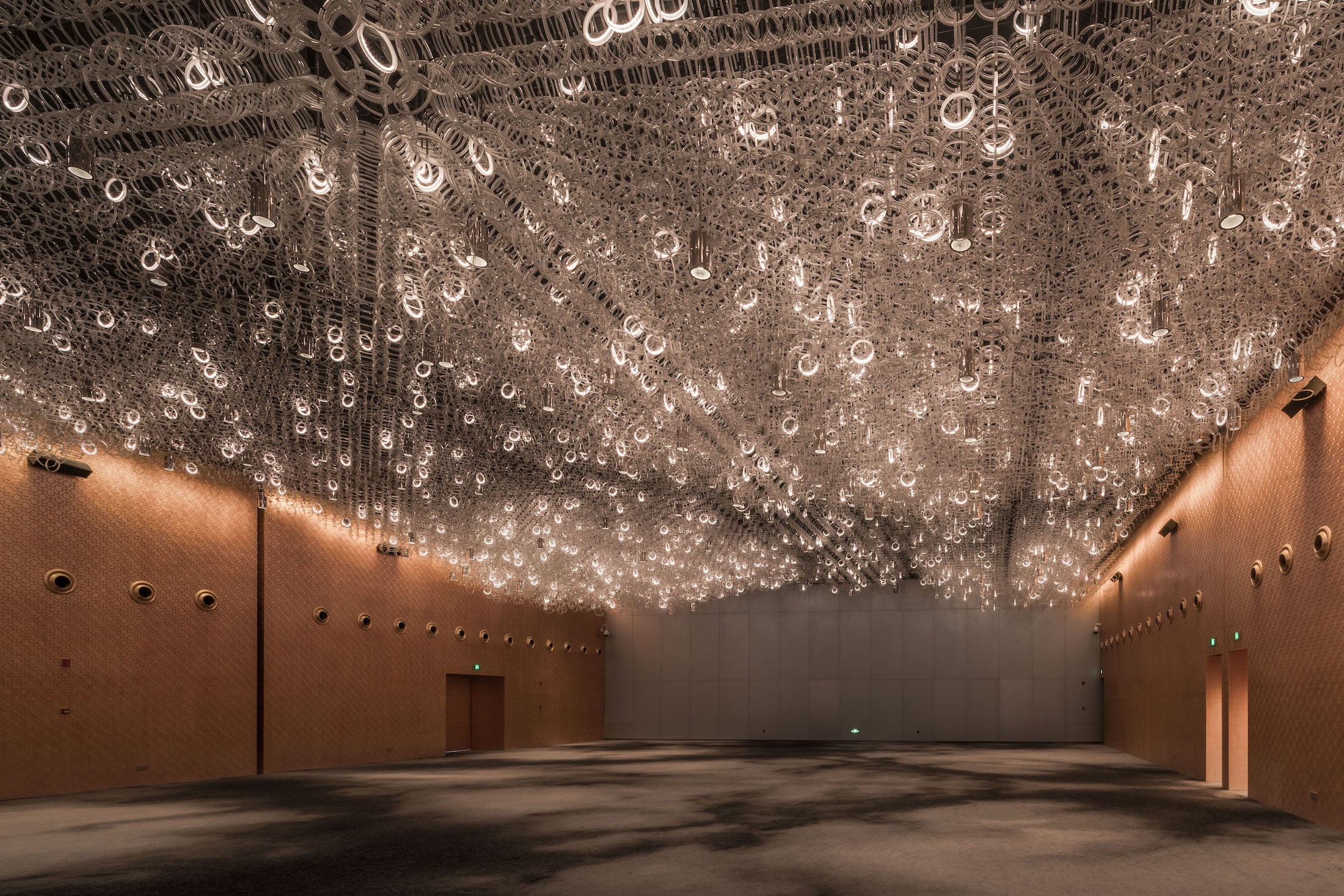
为了打破酒店走廊的单调,客房之间没有一条典型的走廊,而是一系列漂浮在中庭上的桥梁。自然光从天窗或端墙照射进来,突出了由不锈钢瓷砖和黑色石材制成的“雾”图案。中庭的大型装置灵感来自于水的两种状态——露珠和水滴,激发了一种虚幻的规模感和重力感。
To break through the monotony of hotel corridors, guest rooms are not joined by a typical corridor, but a series of bridges floating in the atriums. Shafts of natural light come in either from skylight or the end wall highlighting the “mist” pattern made of stainless steel tiles and black stone. Large installations in the atrium inspired by two states of water – the Dew and the Droplet, stimulate an experience of an illusive sense of scale and gravity.
▼来自天窗的阳光突出了墙壁和地板上的雾状图案 Shaft of sunlight from the skylight highlights the mist pattern on the wall and floor

▼水滴装置强调了客房中庭的垂直性 The Droplet installation accents verticality of the guestroom block atrium
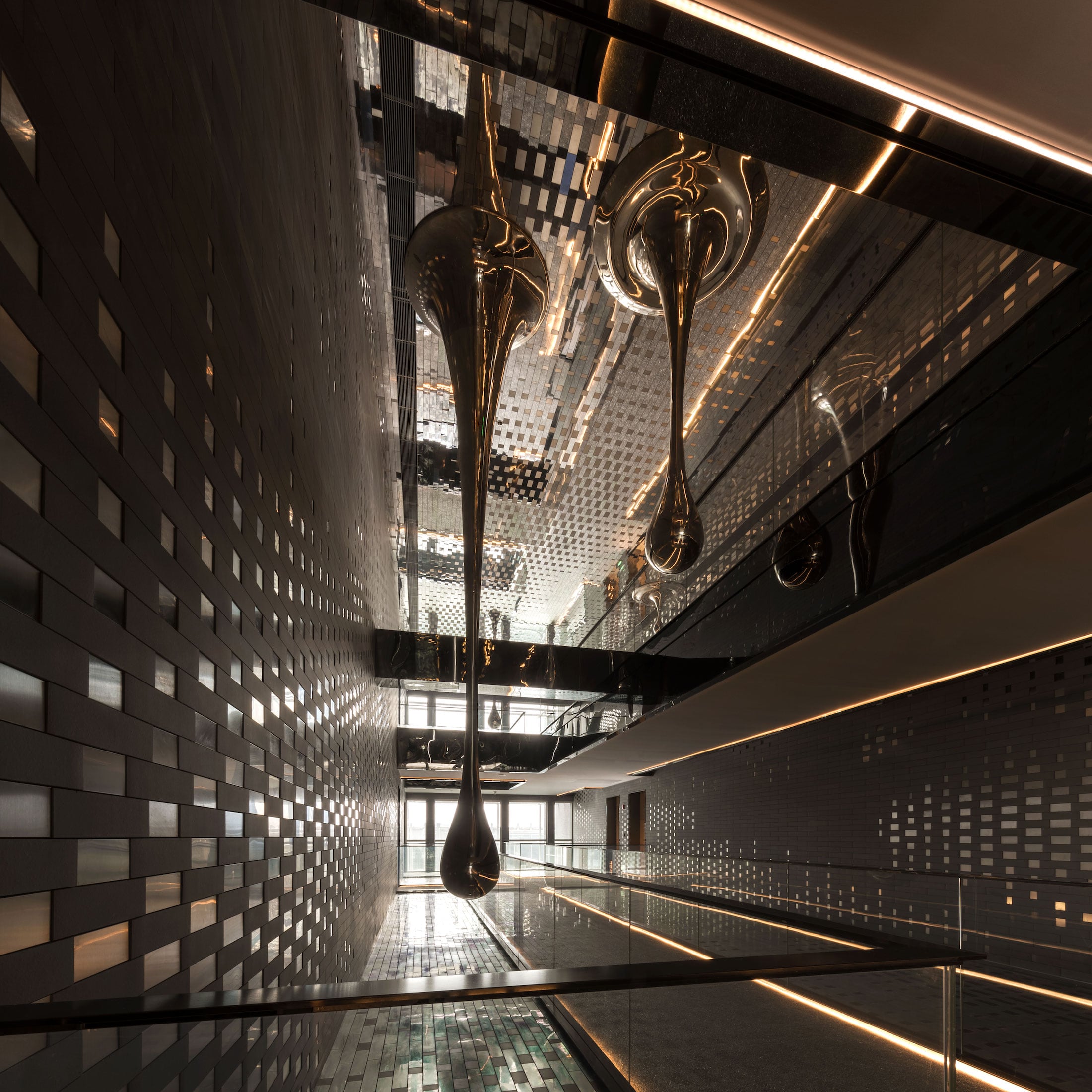
项目确实是我们探索建筑和室内设计的替代方法的尝试。建筑设计不能像我们一直做的那样,通过分析复杂的物理场地(因为它只是一片空旷的土地)或程序的复杂性来进行。建筑架构主要概念和灵感来自另一个学科的艺术——电影的艺术。实际上,就其作用和规模而言,室内设计是艺术装置的延伸。装置被无缝地集成到建筑中,并提供了空间所需的视觉冲击和功能。
The project is indeed our attempt to explore alternative approaches of architectural and interior design. Our architectural design could not be derived from analysis of complicated physical site (since it is merely a flat empty land) or complexity of the program (since the program is rather straightforward), like we always did. Architecture was largely conceptualized and inspired by another discipline of arts – the art of film. While interior design is in fact an extension of art installations in terms of its role and scale. Installations are seamlessly integrated into architecture and provide both visual impact and functions required for the spaces.
▼高空视角 View from a drone

▼平面总布局 Master Layout
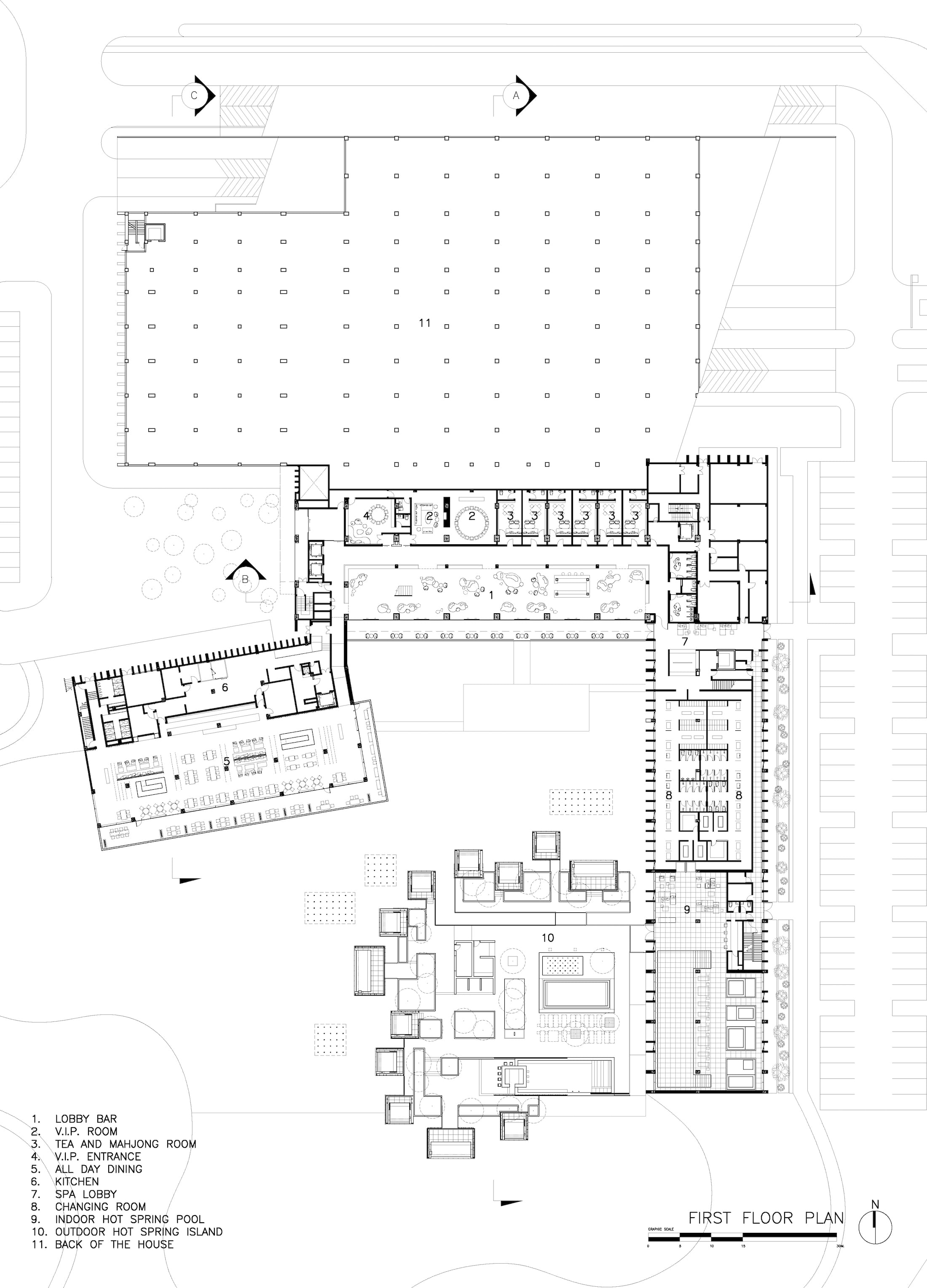
▼建筑平面图 Architectural Plan
▼建筑立面 Elevations
▼建筑立面建造过程 The facade construction process

▼立面细节 Facade detail
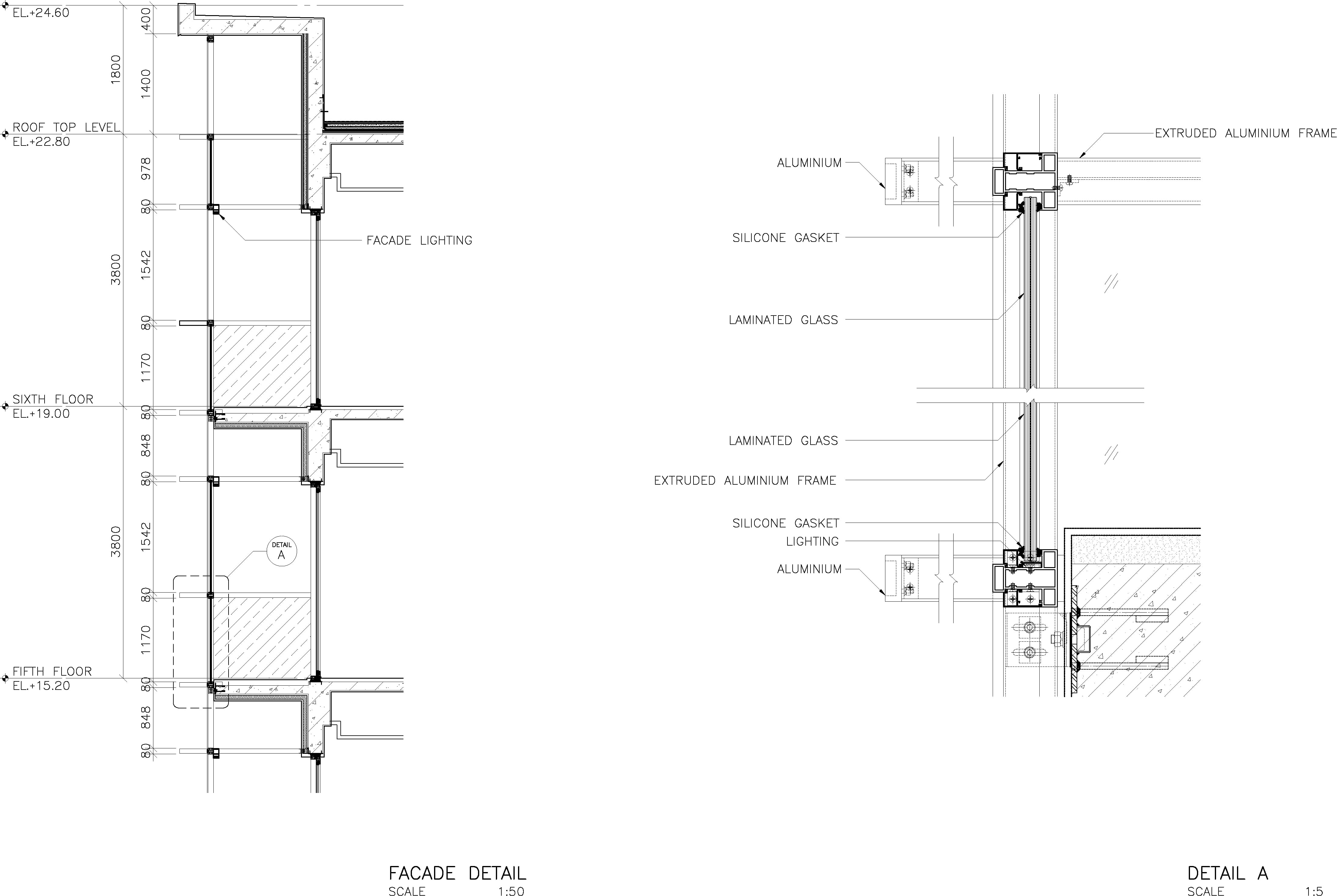
项目名称:MIST温泉酒店
客户:华中酒店管理
建筑设计:Department of ARCHITECTURE Co., Ltd.
主要负责人:Amata Luphaiboon,Twitee Vajrabhaya Teparkum
设计团队:Chaiyapat Mirasena,Chanlika Boonpha,Waraphan Watanakaroon,Waraluk Kuiprasert,Passawee Vongcharoen,Penlada Somjaidee,Kawisara Anansaringkarn,Yada Pianpanit,Thunchanok Sirichayaporn
协调员:San-ming周
工程师/本地建筑师:KKS国际中国有限公司
软景顾问:PELA有限公司
灯光设计师:对比设计工作室有限公司
品牌/视觉识别:artless Inc.
总包方:河南D.R.建设集团
项目地点:中国河南省许昌市陈华甸花都大道
面积:37140平方米
总建筑成本:1.51亿元人民币(2400万美元)
竣工日期:2018年3月28日
摄影师:W Workspace
Project Name: Mist Hot-spring Hotel
Owner: Central China Hotel Management
Architect: Department of ARCHITECTURE Co., Ltd.
Principals: Amata Luphaiboon, Twitee Vajrabhaya Teparkum
Design Team: Chaiyapat Mirasena, Chanlika Boonpha, Waraphan Watanakaroon, Waraluk Kuiprasert, Passawee Vongcharoen, Penlada Somjaidee, Kawisara Anansaringkarn, Yada Pianpanit, Thunchanok Sirichayaporn
Coordinator: San-ming Chou
Engineers / Local Architect: KKS International China Co., Ltd.
Softscape Consultant: PELA Limited
Lighting Designer: in Contrast Design Studio Co., Ltd.
Branding / Visual Identity: artless Inc.
Main Contractor: Henan D.R. Construction Group
Project Location: Huadu Boulevard, Chenhuadian, Xuchang, Henan, China
Area: 37,140 m2
Total Construction Cos: 151 Million RMB (24 Million USD)
Completion Date: 28 March 2018
Photographer: W Workspace
更多 Read more about: Department


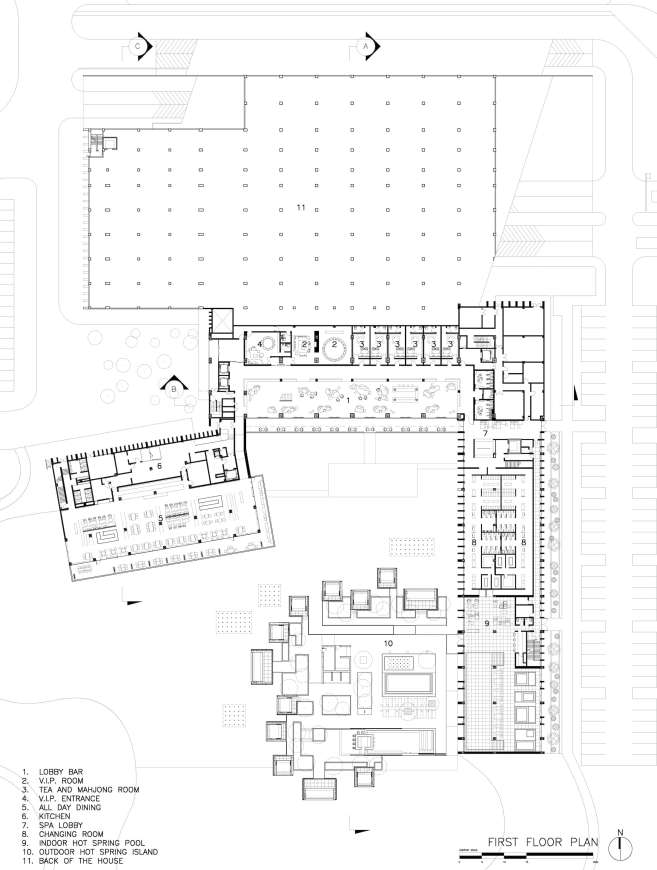
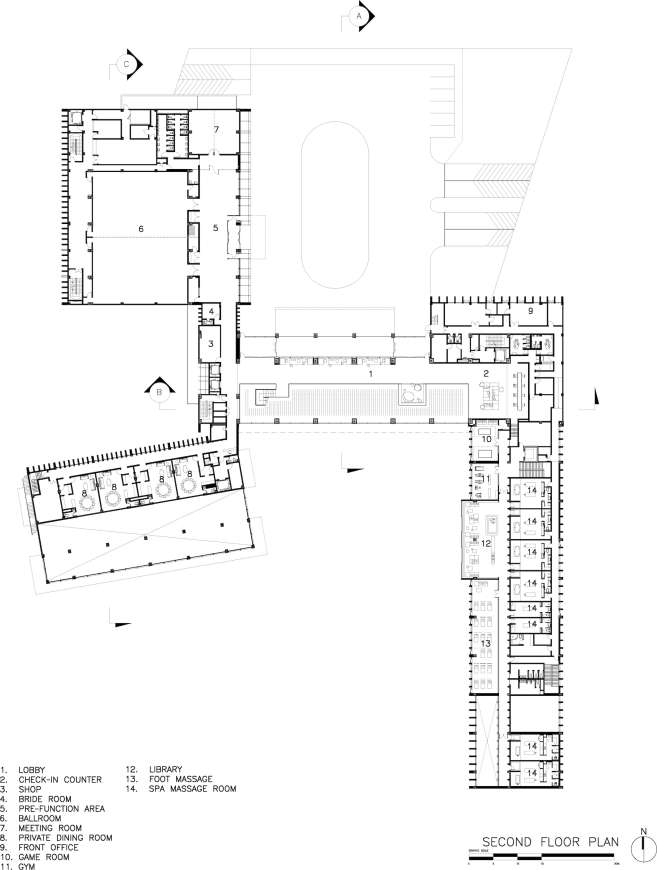
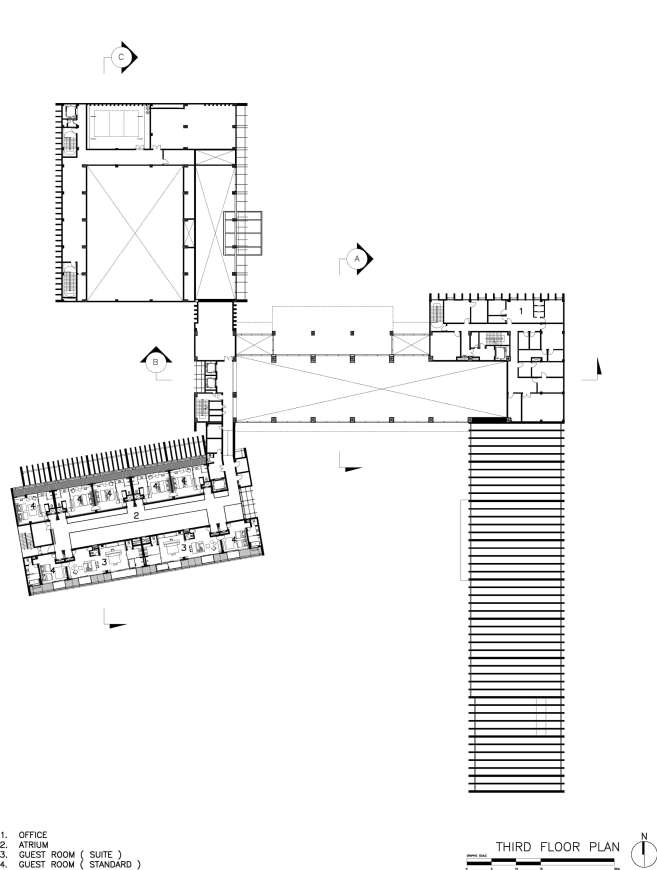
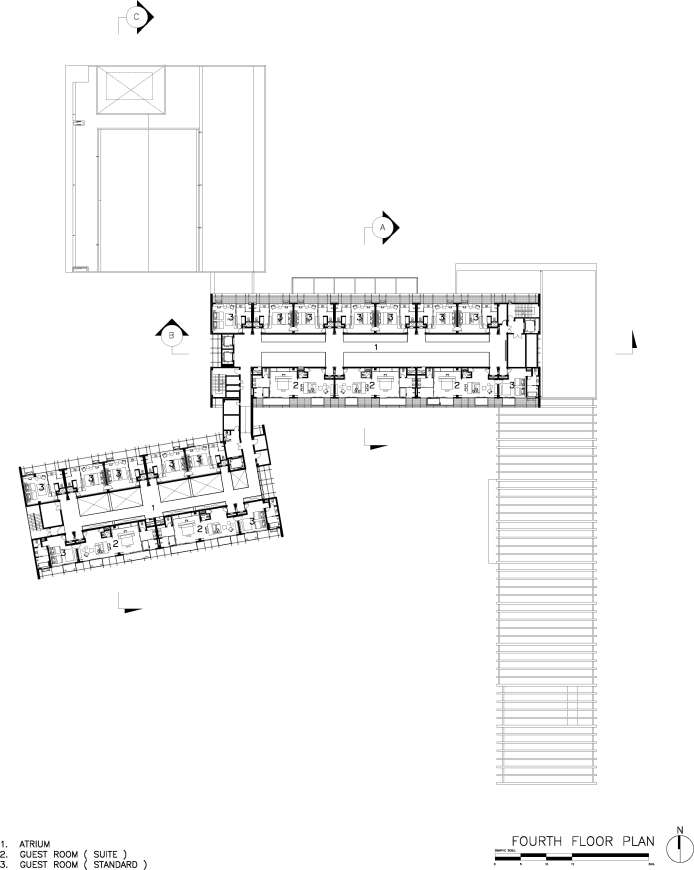
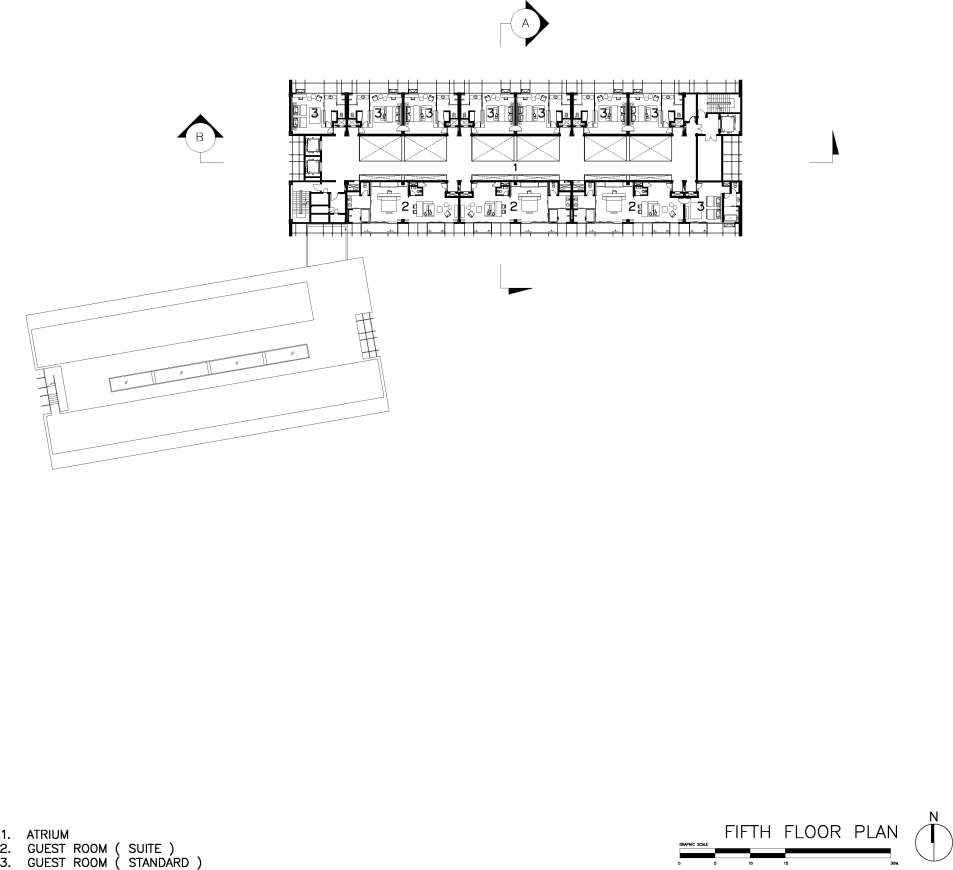
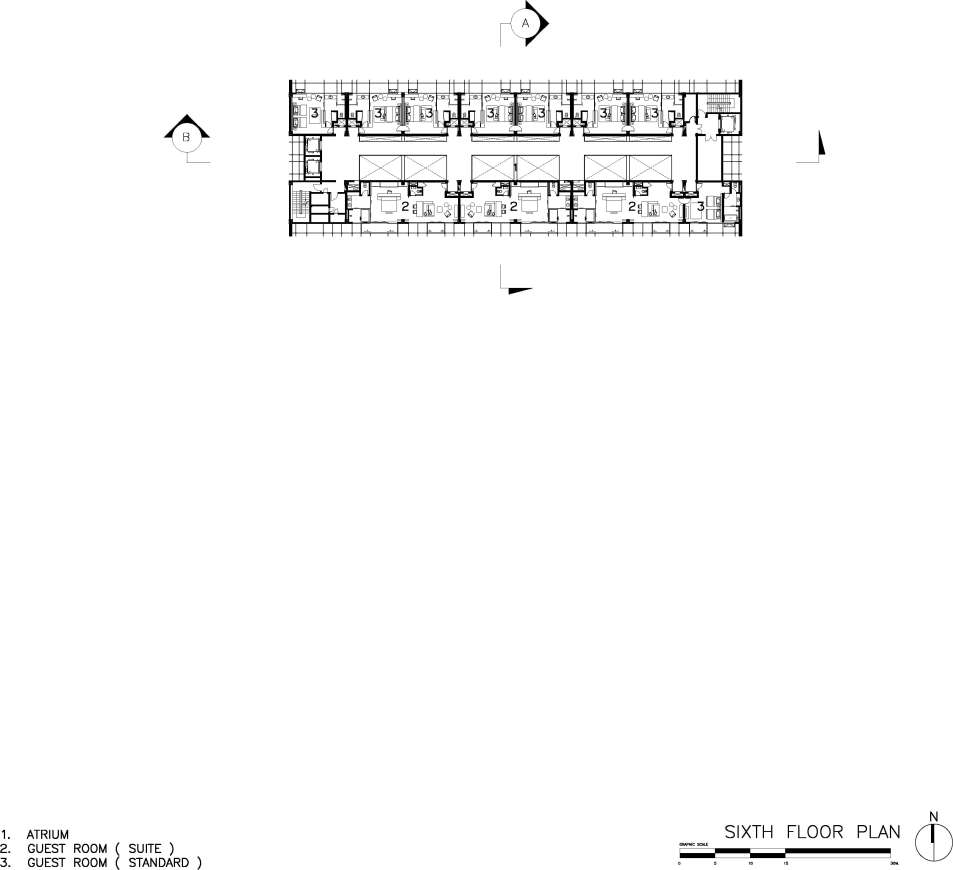
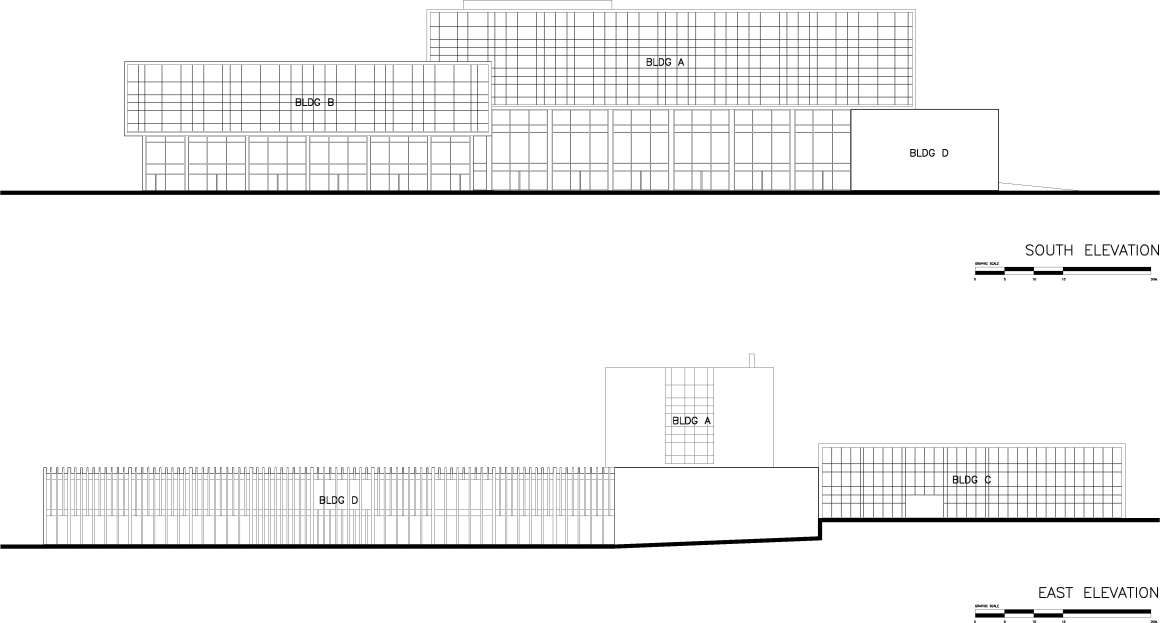
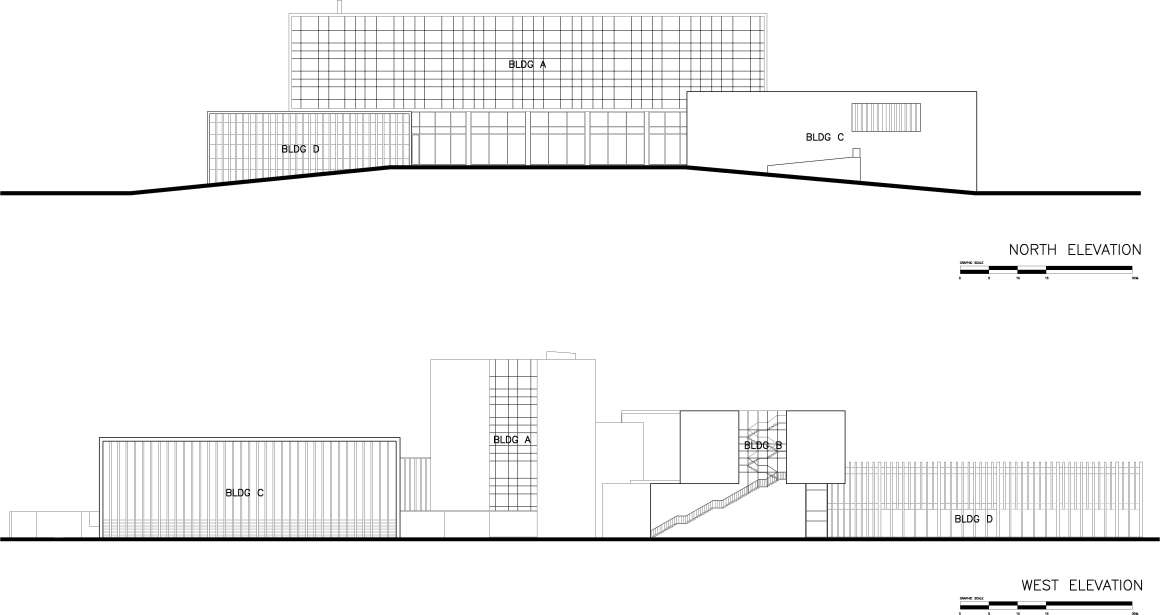
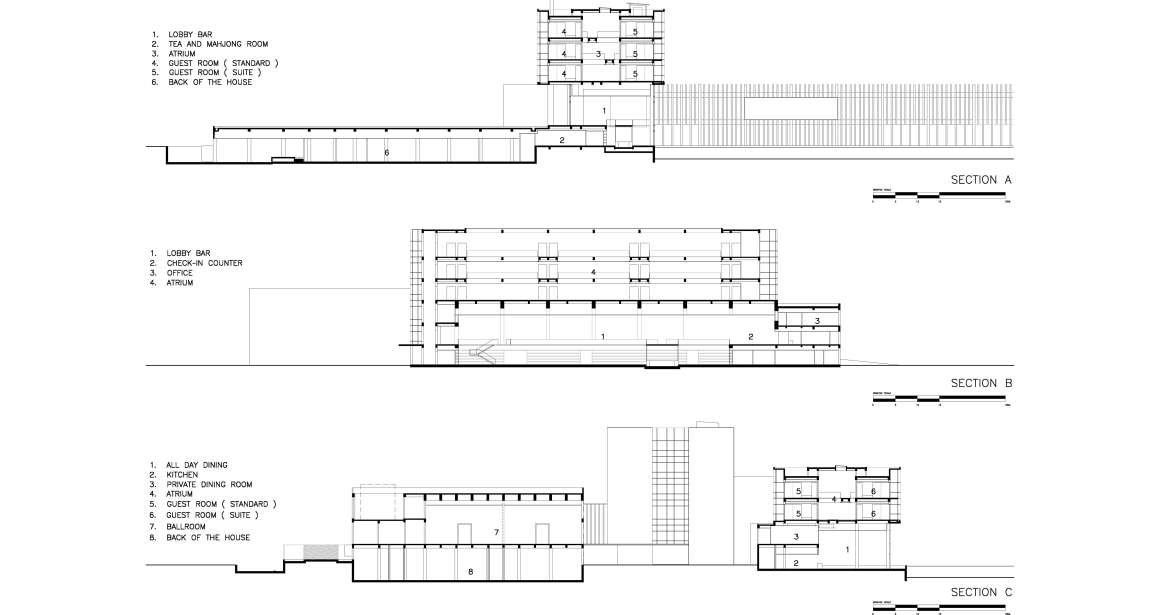


0 Comments